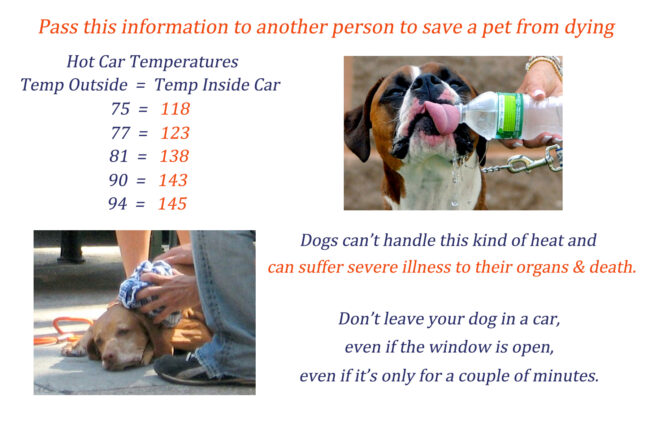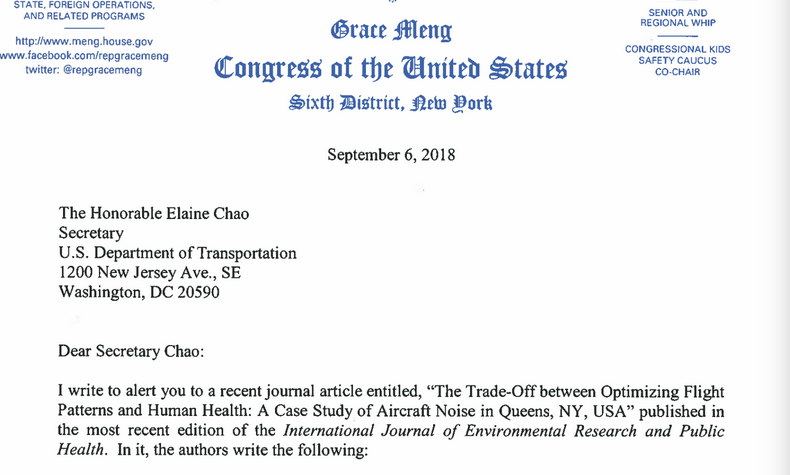Hot Car Dangers
Want to share a copy of this?
Click HERE to download.



At our Bowne Civic Association general meeting yesterday evening, Mr. Nicholas Circharo, Community Affairs Liaison at the NYC Department of Sanitation presented eye-opening information about sanitation. For example, it costs taxpayers $300 million to export waste. For more details, click HERE.
Cost is one of the reasons to recycle. Another is saving our environment. Mr. Circharo recommends that our community participate in the recycling program to save our money and the environment.
Some statistics:
Each ton (2000 pounds) of recycled paper can save 17 trees, 380 gallons of oil, three cubic yards of landfill space, 4000 kilowatts of energy, and 7000 gallons of water. This represents a 64% energy savings, a 58% water savings, and 60 pounds less of air pollution.
As an example, a school with 100 teachers would use 250,000 piece of paper annually. With that, a school like this would spend approximately $7,500 per year on printing on this paper and paper itself costs $25,000, not to mention costs of copy toner and service agreements.
Every year, Americans use more than 90 million tons of paper and paperboard. That’s an average of 700 pounds of paper products per person each year. Every year in America, more than 2 billion books, 350 million magazines, and 24 billion newspapers are published.
In the U.S. industry moves, mines, extracts, shovels, burns, wastes, pumps and disposes of 4 million pounds of material in order to provide one average middle-class American family’s needs for one year. In sum, Americans waste or cause to be wasted nearly 1 million pounds of materials per person every year.
Even when it’s in landfills, plastic is at risk of blowing away and ending up in rivers or oceans. Even more of a risk is plastic litter. … Holidaymakers visiting beaches and leaving behind their bottles, food packaging and cigarette butts on the sand directly contribute to plastic getting into the ocean. Not only does this affect our lands, it kills animals. For more details click HERE.
Recycling saves costs on consumer and office goods. For more details click HERE.
The following information was handed out at our meeting. We also received a free gift of a cool reusable bag.
For more information about the Zero Waste Pledge, click HERE.
You can take New York’s Pledge for Zero Waste and receive a free gift HERE.
March 15, 2018, General Meeting:
Guest Speaker: Dr. Penny Stern
of Northwell Health System
Click to view summary: How To Stay Young
Q&A and Refreshments.
NEW YORK CITY DEPARTMENT OF HEALTH
AND MENTAL HYGIENE
Mary T. Bassett, MD, MPH
Commissioner
FOR IMMEDIATE RELEASE
Monday, July 24, 2017
Click HERE for Map in multiple languages.
HEALTH DEPARTMENT TO CONDUCT SECOND AERIAL LARVICIDE TREATMENT OF MOSQUITO SEASON IN NONRESIDENTIAL AREAS OF THE BRONX, BROOKLYN, QUEENS AND STATEN ISLAND.
Aerial larviciding reduces the number of mosquitoes and minimizes the risk of mosquito-borne disease
To date no human cases of West Nile virus have been reported this season
July 24, 2017 – As part of its mosquito control program, the Health Department will conduct a second aerial larvicide treatment to marshes and other nonresidential areas of Staten Island, Brooklyn, Queens and the Bronx from Thursday, July 27 to Monday, July 31, between the hours of 6 a.m. and 7 p.m., weather permitting. While three days are allotted for this activity, the application may be completed in less time.
The Health Department monitors mosquitoes that carry the West Nile virus and could carry the Zika virus. The Department also applies pesticides to mosquito breeding grounds when appropriate throughout the summer. During warm weather, mosquitoes can breed in any still water standing for more than five days. In the targeted areas, existing hot and wet weather conditions can escalate a rise in mosquito populations. Due to their size and limited accessibility, these areas will be treated using a low-flying helicopter. The areas to be treated are identified in charts below.
The most effective way to control mosquitoes is to eliminate any standing water. New Yorkers are also encouraged to mosquito-proof their homes and take precautions when spending time outdoors.
The Health Department will be using environmentally friendly larvicides to kill infant mosquitoes before they grow into adults. VectoMax® FG contains naturally occurring bacteria and will be used for this application. This product has been approved by the U.S. Environmental Protection Agency and the New York State Department of Environmental Conservation and will be used on mosquito-breeding sites throughout the mosquito season.
Reducing Exposure to Mosquitoes
Report standing water by calling 311 or visiting nyc.gov/health/wnv.
For more information about West Nile virus, call 311 or visit nyc.gov.
Location of Application
| Borough | Neighborhoods | Marsh/Wetland Areas To Be Treated | Boundaries | Zip Code |
| Staten Island | Arlington, Old Place, Howland Hook | Goethals North | Marsh areas bounded by South Avenue to the east; former North Shore Railroad to the north; Arthur Kill Channel to the west; and Staten Island Expressway to the south | 10303 |
| Bloomfield | Corporate Park North | Marsh areas bound by Graham Avenue and Felton Street to the east; Goethals Road North to the north; Gulf Avenue to the west; and Teleport Drive and Edward Curry Avenue to the south | 10311
10314 |
|
| Chelsea,
Bloomfield |
Saw Mill Marsh North | Marsh areas bounded by Chelsea Road to the east; River Road to the north; Arthur Kill Channel to the west; and Sawmill Creek to the south | 10314 | |
| Chelsea,
Bloomfield |
Saw Mill Marsh | Marsh areas bounded by South Avenue to the east; Edward Curry Avenue, Chelsea Road and River Road to the north; Pralls River to the west; Meredith Avenue, Chelsea Road and South Avenue to the south | 10314 | |
| Chelsea,
Bloomfield |
Corporate Park | Marsh areas bounded by south Avenue to the east and south; Edward Curry Avenue to the north; and Chelsea Road and Bloomfield Avenue to the west | 10314 | |
| Chelsea | Chelsea East | Marsh areas bounded by Victory Boulevard to the east; South Avenue and Travis Ave to the north; Chelsea Road to the west; and Meredith Aveto the south | 10314 | |
| Chelsea , Travis | Chelsea | Marsh areas bounded by Victory Boulevard to the east; Meredith Avenue, Chelsea Road, South Avenue, and Travis Avenue to the north; Arthur Kill Channel to the west; and Wild Avenue and Victory Boulevard to the south | 10314 | |
| Fresh Kills | Fresh Kills | Marsh areas bounded by Richmond Avenue to the east; Main Creek to the north; West Shore Expressway to the west; and Arthur Kill Road to the south | 10314 | |
| Staten Island | Fresh Kills, Richmond Town | La Tourette | Marsh areas bounded by Richmond Hill Road to the east; Forest Hill Road to the north; Richmond Avenue to the west; and Arthur Kill Road to the south | 10306
10308 10314 |
| Port Mobile | Port Mobile | Marsh and wetland areas bounded by Arthur Kill Road to the east; Arthur Kill Channel to the north and the west; and Outerbidge Crossing to the south | 10309 | |
| Wolfes Pond Park | Wolfes Pond Park | Marsh areas bounded by Luten Avenue, Cornelia Avenue and Chisholm Street to the east; Staten Island Railway to the north; Holton Avenue to the west; and Boardwalk Avenue to the south | 10309
10312 |
|
| Blue Heron Park | Blue Heron Park | Marsh areas bounded by Barclay Avenue to the east;; Amboy Road to the north; Arbutus Avenue to the west; and Hylan Boulevard to the south | 10312 | |
| South Beach | South Beach | Marsh areas bounded by Quintard Street and Sand Lane to the east; Mason Avenue to the north; Seaview Avenue to the west; and Father Capodonna Boulevard to the south | 10305 | |
| Old Town | Old Town | Marsh areas bounded by Naughton Avenue and Seaview Avenue to the east; Zoe Street to the north; Stobe Avenue, Rowan Avenue and Graham Boulevard to the west; and, Father Capodonna Boulevard to the south | 10305 | |
| Clove Lake Park | Clove Lake Park | Marsh areas bounded by Clove Road to the east; Forest Avenue to the north; Brookside Ave and Royal Oak Road to the west; and Victory Boulevard to the south | 10310
10314 |
|
| Brooklyn | Marine Park | Marine Park | Marsh areas bounded by Flatbush Avenue to the east; Avenue U to the north; Gerritsen Avenue to the west; and Belt Parkway to the south | 11229
11234 |
| Fresh Creek Basin | Fresh Creek | Marsh areas bounded by Louisiana Avenue to the east; Stanley Avenue to the north; East 108th Street to the west; and Belt Parkway to the south | 11239 | |
| Queens | Alley Pond Park | Alley Creek | Marsh areas inside Alley Pond Park – areas bounded by Douglaston Parkway and 240th Street to the east; Northern Boulevard to the north; Cross Island Parkway and East Hampton Boulevard to the west; and Grand Central Parkway to the south | 11362 11363 |
| Linden Hill/ College Point | Abandoned
Flushing Airport |
Marsh areas bounded by Whitestone Expressway to the east; 20th Avenue to the north; 130th Avenue and Ulmer Street to the west; and Ulmer Street and 28th Street to the south | 11354
11356 11357 |
|
| Edgemere,
Somerville |
Dubos Point and Edgemere Park | Marsh areas bounded by Norton Basin to the east; Mott Point to the north; Grass Hassock Channel to the west; and Beach 65th Street, De Costa Avenue and Almeda Avenue to the south | 11691 11692 | |
| Brookville Park | Brookville Park | Marsh areas bounded by Huxley Street to the east; 149th Avenue (to 225th Street), 148th Avenue (to 230th Street) and 147th Avenue (to 235th Street) to the north; 150th Road to the west; and Rockaway Boulevard to the south | 11413
11422 |
|
| Kissena Park | Kissena Park | Marsh areas bounded by 164th Street to the east; Oak Avenue and Rose Avenue to the north; and Kissena Boulevard to the west; and Booth Memorial Avenue to the south | 11355
11365 |
|
| The Bronx | Pelham Bay Park North | Pelham Bay North | Marsh areas bounded by Amtrak Railroad to the east; New England Thruway to the north; and the Hutchinson River to the west and south | 10464
10475 |
| Pelham Bay Park South | Pelham Bay South | Marsh areas bounded by Pelham Bay Parkway and Hutchinson River to the south and east; and Erskine Place to the north and west | 10465
10475 10464 |
WARNING FROM SHELL OIL COMPANY DO
|